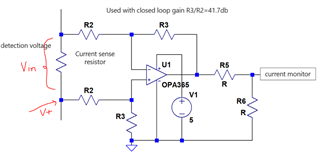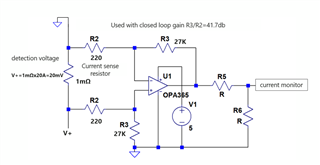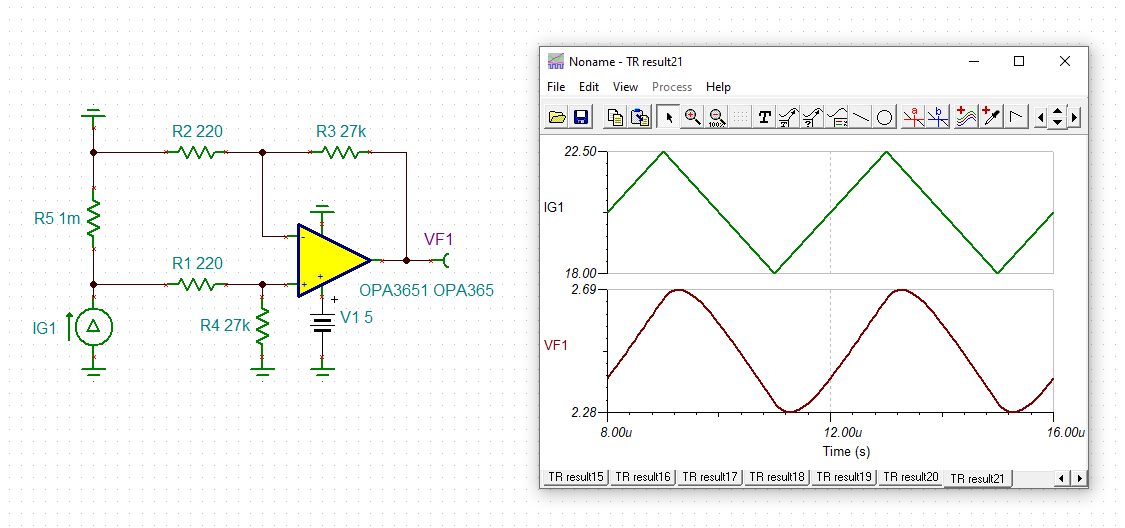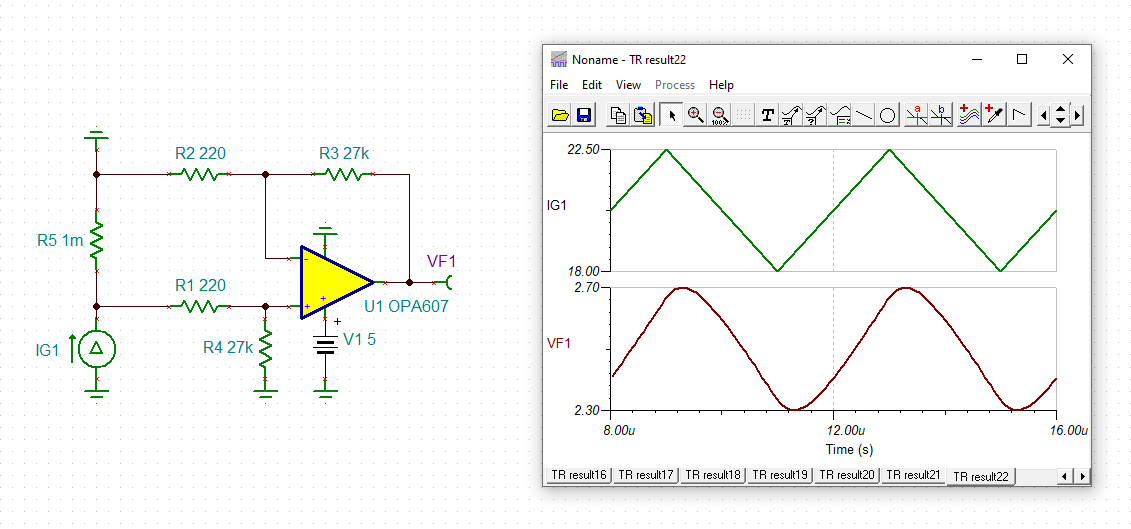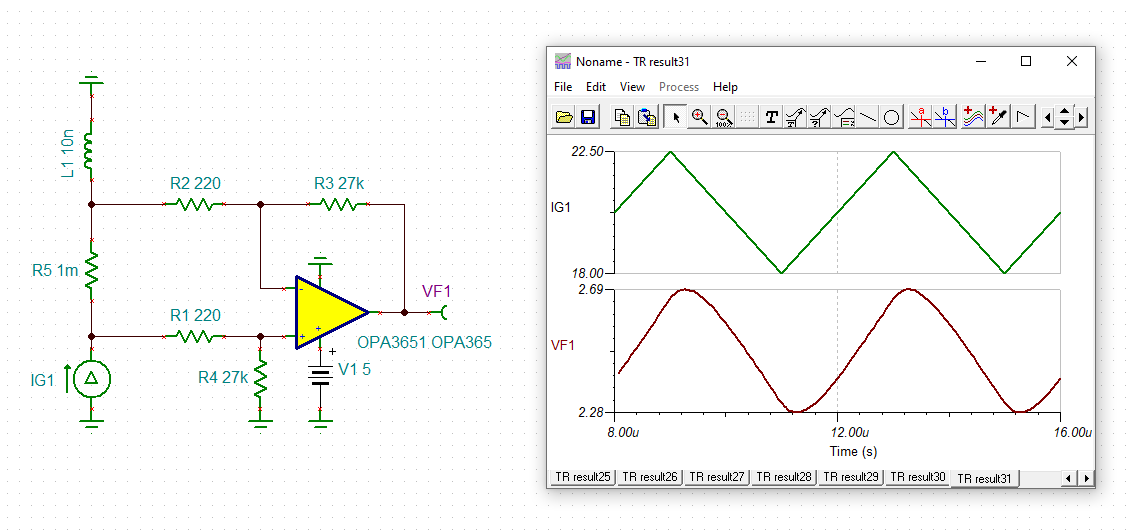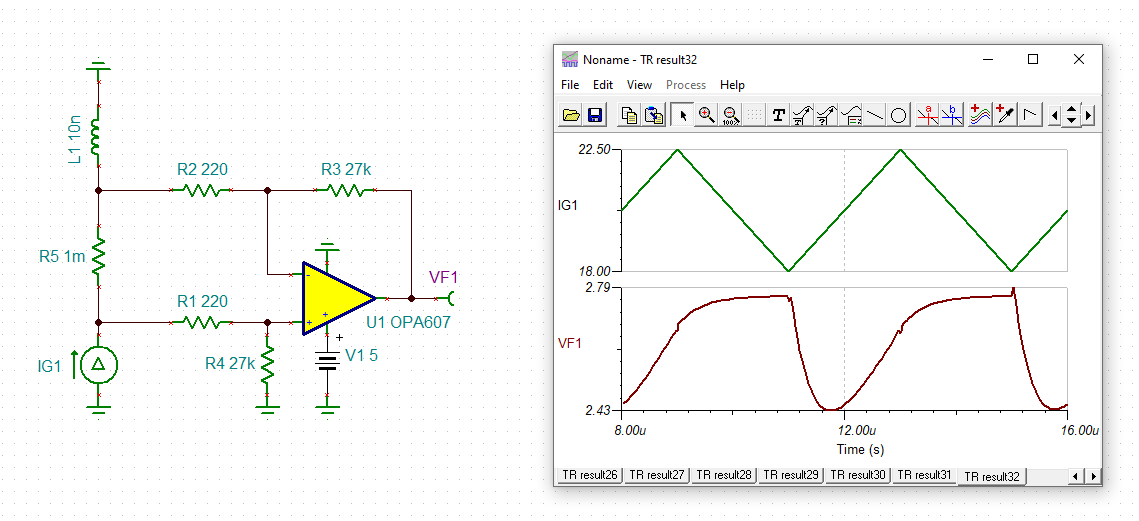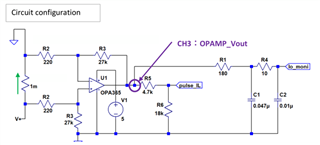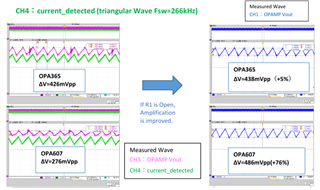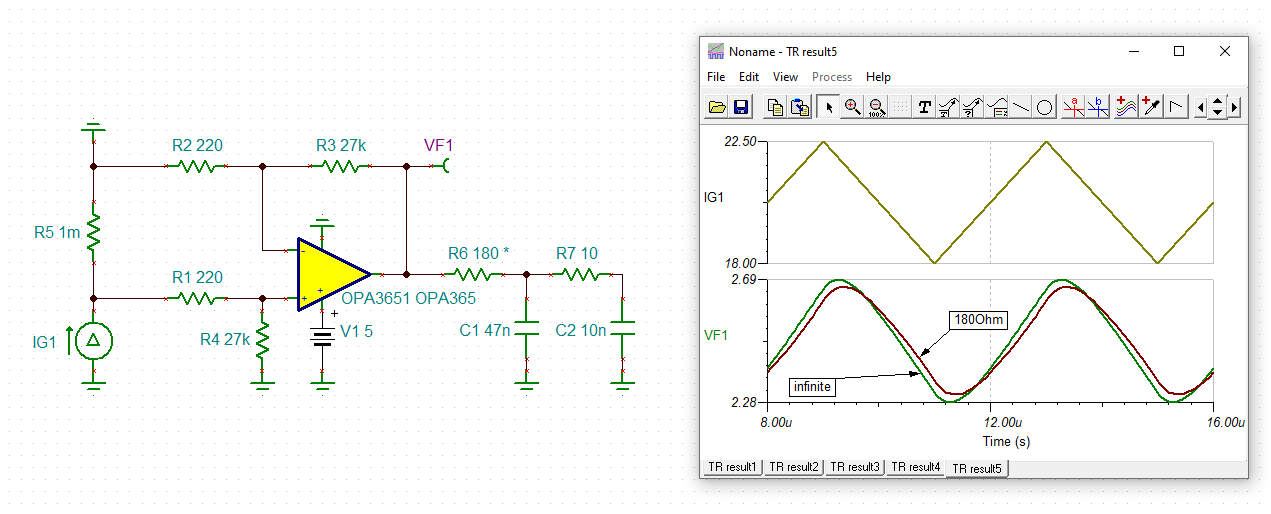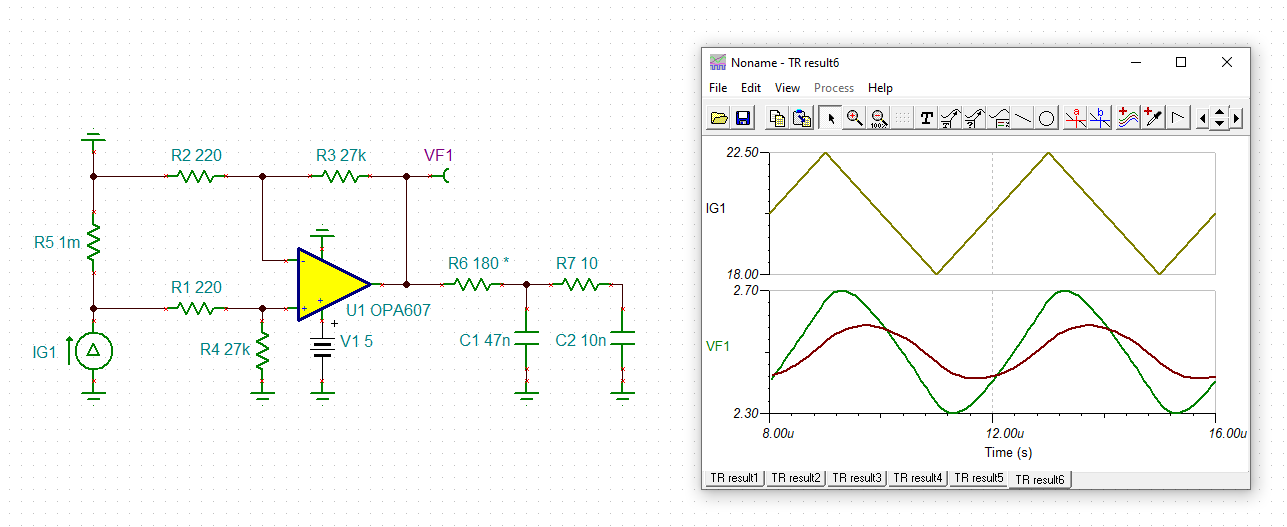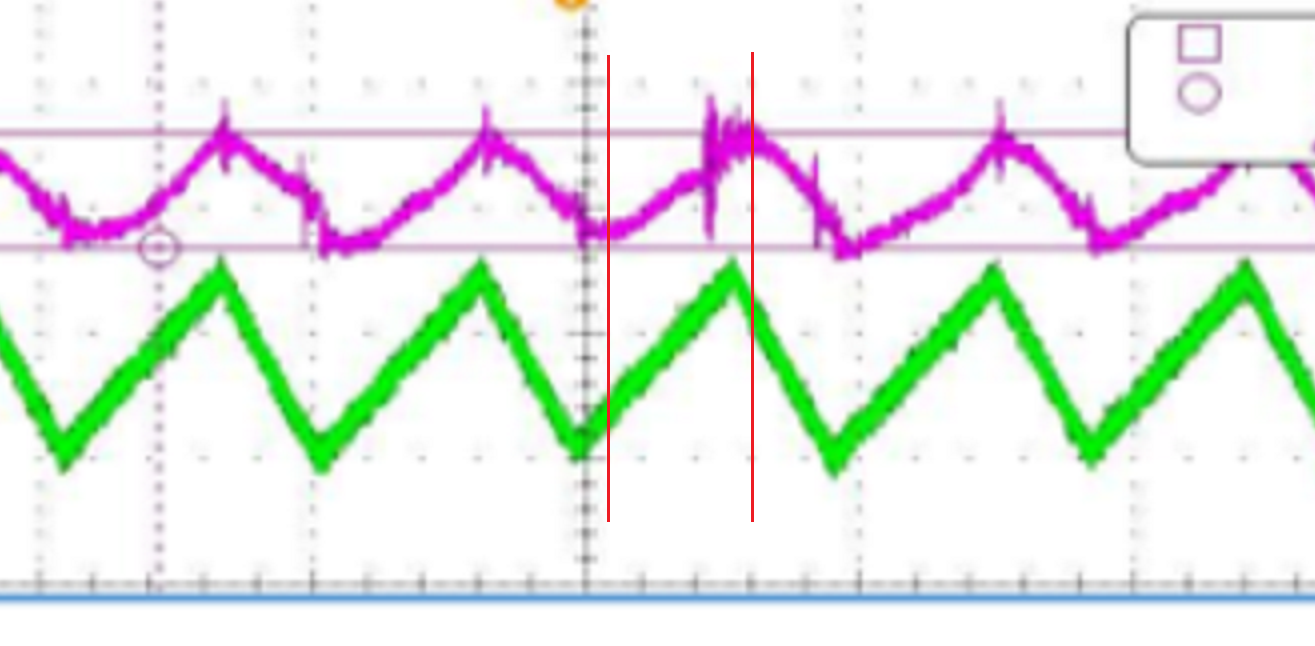Other Parts Discussed in Thread: OPA365,
Hi,
I am using OPA365 for current sensing.
We are evaluating whether the OPA607 can be used as a replacement for the OPA365. Below is the circuit diagram.
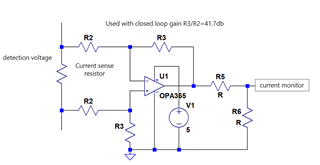
・The ratio of the resistance value of the feedback side and the input side is 41.7dB.
・The operational amplifier output is divided by R5 and R6 and used for current monitoring.
Question 1: Since the GBW of the OPA607 and OPA365 is 50MHz, is it correct to assume that the open loop gain and closed loop gain are the same?
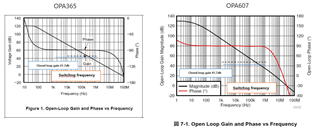
Question 2: What can be the reason for the approximately 35% difference in magnitude of the op-amp output waveform under the same conditions?
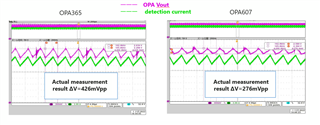
Question 3: What are the possible reasons why the waveform of the op amp output is distorted from the triangular wave?
Thanks,
Astro


